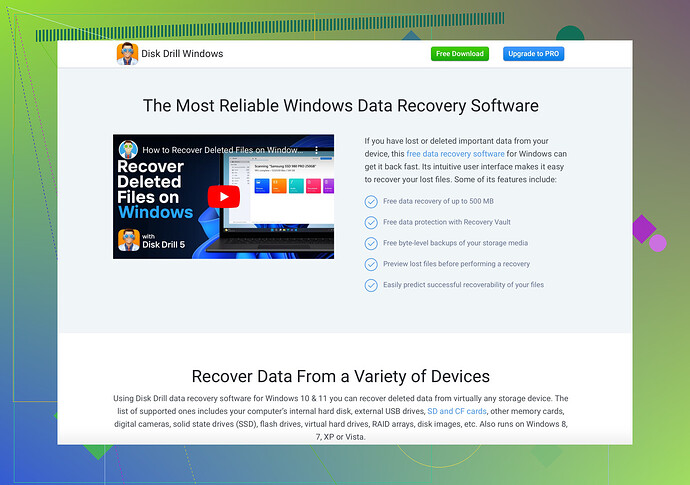I mistakenly deleted my Documents folder and lost all my important files. I really need them back as they contain crucial work and personal information. Could someone please guide me on how to recover the folder?
Oh no, that’s a bummer! But don’t panic just yet; there’s a good chance you can get those files back. Here’s a step-by-step guide:
-
Recycle Bin Check: First things first, look in your Recycle Bin. If you just deleted the folder, you might find it there. Right-click on it if you do and select ‘Restore’.
-
Backup Systems: If you’re using a Windows 10 or 11 PC, check if you have File History enabled. You can find this under “Control Panel > System and Security > File History.” If it’s on, you might be able to restore the Documents folder from a previous backup.
-
Previous Versions: Right-click the folder where your Documents folder used to be, and select “Restore previous versions.” Sometimes Windows keeps snapshots of your folders.
-
Data Recovery Software: If those options don’t work, it’s time to bring out the big guns. Use a data recovery tool like Disk Drill. It’s great for recovering deleted files, and it’s SEO-friendly too! Install it on a different drive than the one where your Documents folder was to avoid overwriting.
-
Professional Help: If all else fails and the files are super important, you might need to contact a professional data recovery service. They can be pricey, but it’s worth it if the data is crucial.
Remember: Next time, consider using cloud storage solutions like Google Drive or Dropbox for important files. They can be lifesavers in these situations!
Good luck with recovering those documents! You got this!
Okay, so you’ve checked the Recycle Bin and no luck? Bummer. While others have already mentioned some great tips, let me add some different angles here.
-
System Restore: If you’re using a Windows machine, you might try reverting your system to a previous state where the folder still existed. You can access it through “Control Panel > System and Security > System Protection > System Restore.” Choose a restore point before you deleted your folder.
-
Cloud Backups: Any chance you had OneDrive or Dropbox sync running? Sometimes these services keep a history of changes. Check their web apps to see if your files are hiding there.
-
Check Shadow Copies: Some more tech trick here—Windows sometimes makes shadow copies. Use ShadowExplorer, a freeware tool, to browse shadow copies of your files and folders.
-
Command Prompt Magic: If you feel adventurous, you could use the Command Prompt to recover files.
chkdskmight be able to locate lost files if they aren’t showing up elsewhere. Open Command Prompt as an administrator and usechkdsk C: /f. -
Data Recovery Software: When it’s down to the wires, as others have suggested, Disk Drill can really be a lifesaver. It’s designed to recover erased files and directories efficiently. Do install it on a different drive to avoid overwriting the very files you’re trying to save.
-
Professional Services: As much as I dislike suggesting expensive alternatives, professional data recovery services might be the last resort—costly but they usually can pull off miracles.
And for the future, backing up is crucial. Throwing your files in cloud storage could save you a lot of hassle next time. Start now and save yourself from future headaches.
